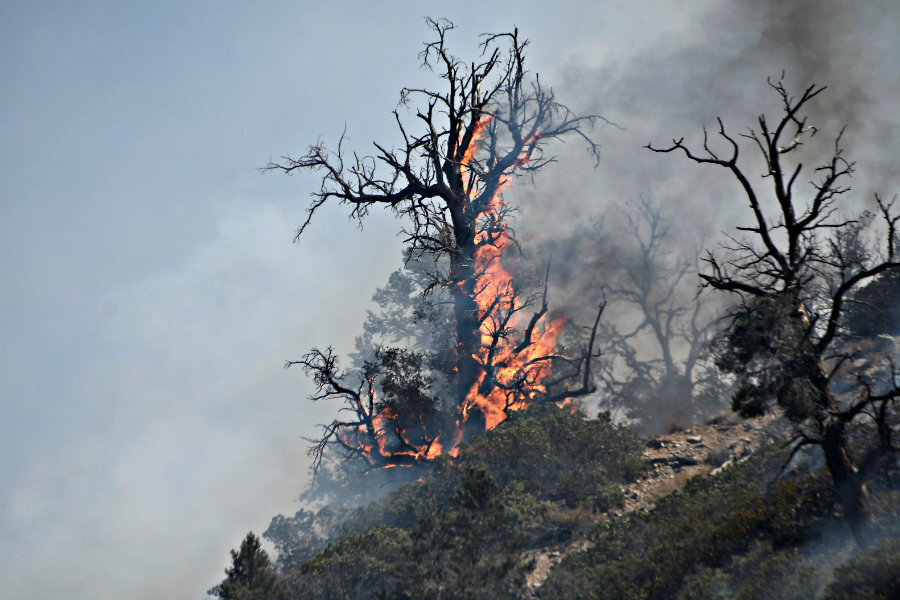Blue Cut ‘extreme’ wildfires: California's new normal?
Loading...
As firefighters battle the Blue Cut that devoured 38,000 acres of brush and homes just 48 hours, many are wondering if the extreme expansion of the blaze represents a new normal.
Southern California’s hot temperatures and dry weather has always meant that the area is prone to forest and brush fires, but veteran firefighters say recent fires have been hotter and stronger than anything they’ve ever seen before.
"In my 40 years of fighting fire, I've never seen fire behavior so extreme," Incident Commander Mike Wakoski told the Associated Press.
The Blue Cut fire began as a small brush fire, but has now forced more than 82,000 people out of their homes after it spread to cover more than 37,000 acres of land in the Cajon Pass between the San Bernardino mountains and the San Gabriel mountains.
Although firefighters were surprised by just how quickly the flames blazed out of control, this year’s blistering fire season was no great surprise to experts.
"It's to the point where explosive fire growth is the new normal this year," California Department of Forestry and Fire Protection’s Glenn Barley told the Associated Press.
In June, the US Forest Service drew attention to fertile conditions for wildfires in the state. A buildup of dead trees in the state because of long-term drought conditions, high temperatures, and beetle infestations, prompted the Forest Service to issue a plea to Congress in June, requesting that the federal government allocate more funds to firefighting.
The Forest Service spent more than half of its operating budget on firefighting and suppression last year, the most expensive fire season in history. And the Forest Service only expects matters to get worse, with twin dangers of drought and bark-eating beetles continuing to ravage California’s forests.
Between 2010 and 2015, the Forest Service estimates that about 66 million trees have died in California. The combination, as seen again this week in San Bernardino County, is explosive, leading to massive forest fires that the Forest Service can ill afford.
"Forcing the Forest Service to pay for massive wildfire disasters out of its pre-existing fixed budget instead of from an emergency fund like all other natural disasters means there is not enough money left to do the very work that would help restore these high mortality areas," Tom Vilsack, secretary of the Department of Agriculture, said in June. "We must fund wildfire suppression like other natural disasters in the country."
Officials are now calling for an integrated approach to wildfire management, one that includes acknowledging the ways in which humans impact the landscape and contribute to fire damage, as well as better fire safety procedures.
The Cajon Pass, where this week’s fire is taking place, is a historic part of California. The mountains there have seen horse rustling outlaws, Mormon pioneers, and the westward expansion of both the railroad in the 1880s, and highway I-15.
This report includes material from the Associated Press.








